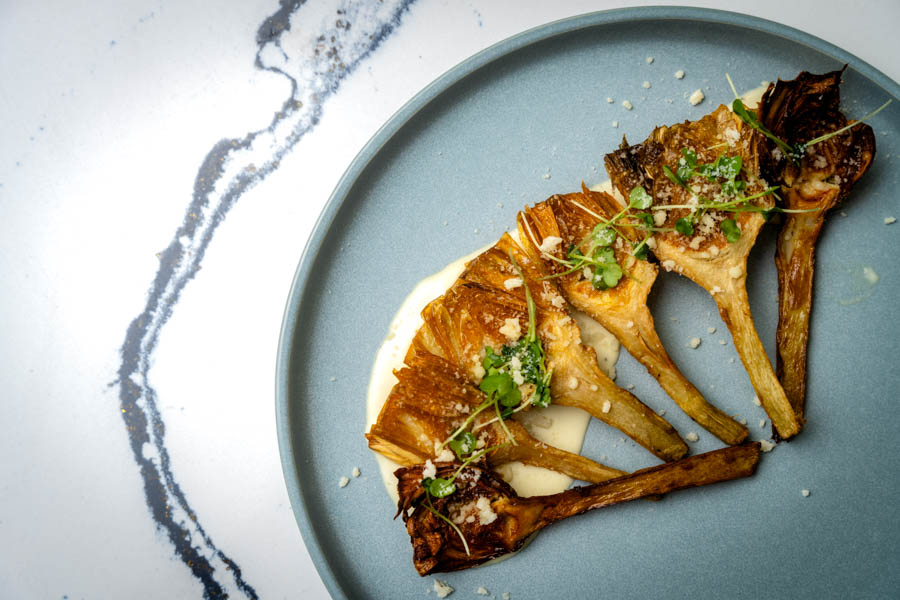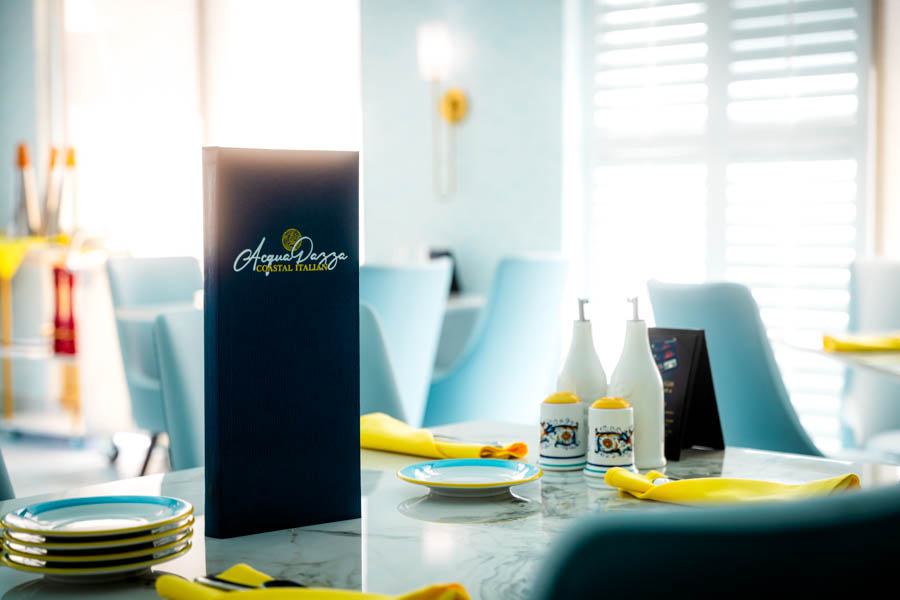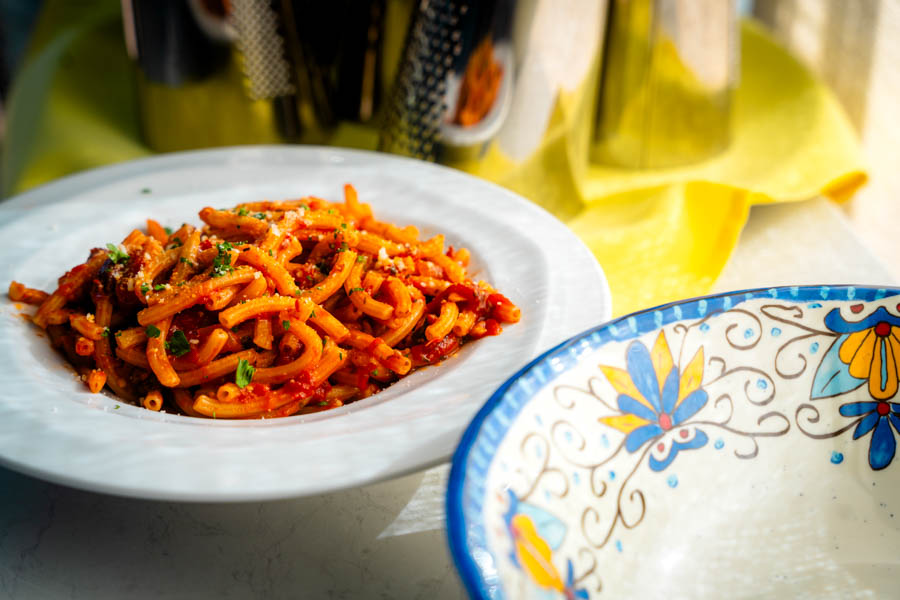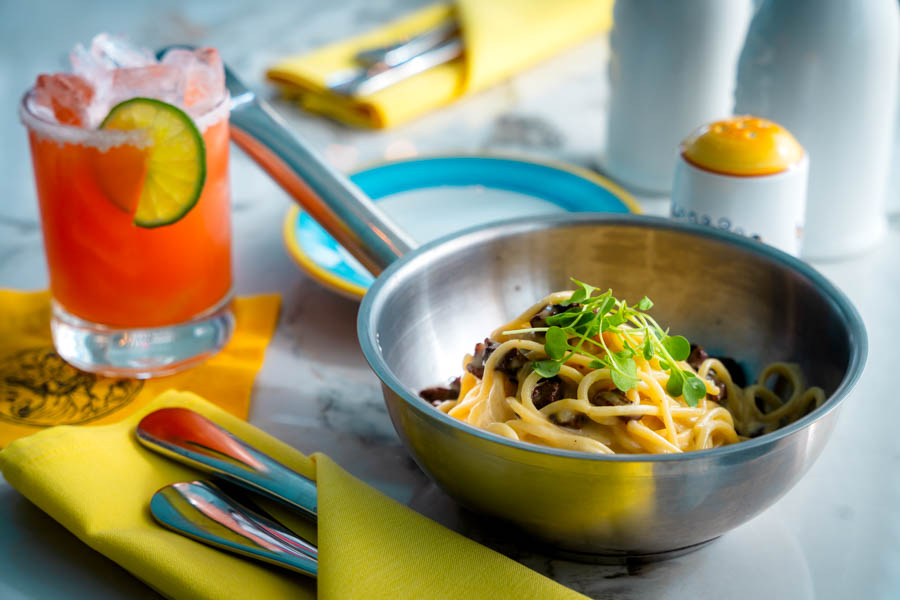One evening in January, a cold rain drizzles down on Downtown Wellen Park, splashing off the colored shade awnings meant for cheerier weather. Most people are probably at home, snuggling under fluffy blankets, sipping hot cups of coffee and scrolling through sun-soaked destinations on Instagram. But those who brave the weather this particular night will be rewarded with a whirlwind culinary journey through Italy at Acqua Pazza Coastal Italian, a new concept in Downtown Wellen Park from brothers David and Dennis Valentino and Mark Costanzo. They are also owners of Donato’s Italian Restaurant, as well as Claw & Co. and The Banyan House Restaurant, which are helping to define the spirit of Wellen Park.
“People love the identity of their community through their restaurants. This is a beautiful development that they’ve built here, but what makes something a community is not buildings; it’s not houses. It’s the local organizations—the churches, little league teams and, almost first and foremost in a lot of people’s minds, it’s the restaurants,” David says. “When you think of where you’re from or where you grew up, the first things you probably think of are the places where you went to celebrate anniversaries or graduations. I think that’s a common thing, so when you talk about making a group of houses and a group of buildings into a community, very much in the foreground are its local restaurants.”

Inspired by Wellen Park’s growth, David and his team decided that the area would be a great home for a project they’d been kicking around for a long time. “The idea of doing Italian in a more traditional approach is something that has been on the back burner for quite a while,” he says. While his Italian-American concept, Donato’s, has long been a staple of nearby Port Charlotte, he wanted Acqua Pazza to reflect the customs and cuisine that he and his family found during trips through Italy.
“One of the things that surprised me when I first visited and got to Rome was that the place was covered with seagulls. I thought, ‘Why are there seagulls?’ because, in my mind, Rome is a city, and more than that, it’s a central city,” David adds. “When you find Rome on a map, you’ll find that it’s quite close to—less than 45 minutes—from the coast, so a lot of those coastal influences and fresh seafood are found in Roman cuisine, above and beyond the four classic pasta dishes that we all associate with the area.”

While Acqua Pazza’s interior is decorated with intricate tiles, soothing blues and pops of yellow—which call to mind the Meyer lemons that symbolize the Amalfi and Positano regions—the menu is an homage to Rome. Take the crispy Roman fried artichokes, accompanied by a parmesan cream sauce. “In Rome, they’re referred to as Jewish fried artichokes because there was a very large Jewish minority in Rome, and there is still an area of the city that people think of as sort of the Jewish Quarter in Rome. It’s one of the best food stops you can go to if you’re visiting Rome. You do not want to miss it, and you will find this particular item on just about every menu,” says David. For a larger, shareable appetizer that features another of the Jewish Quarter’s delicacies, order the fritto pesce. Salted cod, called baccalà in Italian, stars in this dish and is served in the same Roman establishments as the fried artichokes. Along with cod, you’ll sample whole scallops, shrimp, calamari, long green peppers and lemon aioli for a refreshing start to the meal.
For a pasta course, don’t miss the amatriciana, carbonara or cacio e pepe, which represent three out of four of Rome’s most famous pasta dishes. Acqua Pazza makes its pasta fresh and in-house, and the delectable al dente noodles are a pasta lover’s dream come true. When possible, the restaurant imports ingredients from Italy, like the guanciale in the carbonara. “Pancetta, what they call Italian bacon, is more of the pork belly. The guanciale is very sought-after because it’s the jowl or cheek of the pig, and it’s a bit different in profile,” David adds. “It’s very luscious and has a wonderful fat content. That’s what works with the pasta water and starch to create this slight thickness. When you put them together, it creates these wonderful pan sauces.” As they do in Italy, the eatery serves its pasta in pans for an authentic touch.

Fans of bolognese sauce will adore the lasagna bolognese, “a perfect example of where Italian-American and Italian cuisine have created two equally beautiful dishes,” says David. This traditional twist on one of his favorite comfort foods celebrates traditional besciamella sauce. Sweetness runs through the creamy sauce, and beef, veal and pork provide ample meatiness. If turf is what you’re going for, then try the veal chop parmigiana. The chefs remove the bone and pan-fry the chop, then plate it with San Marzano tomato and buffalo mozzarella. If you’re in search of a seafood showstopper, he recommends the branzino, a popular fish in Italy. “We’ve done a full skin-on filet that’s hard-sealed and gets a crispy outer skin. It’s served on risotto and has a simple lemon butter herb topping, and I consider it one of the most traditional Italian coastal things we do here,” he adds.
Save room for dessert and you can indulge in the pistachio tiramisu. Made to order in an adorable mug, this sweet treat will brighten your day, whether you’re having a surprise birthday party with friends and neighbors or savoring a simple pleasure on a cold, blustery day.









